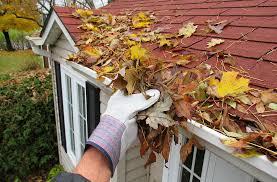
Last year around this time I addressed seasonal security, with a focus on the decreasing hours of daylight and the security concerns which came along with this. This article can be found at http://sunshinewoods.ca/tips/seasonal_security_tips This year I figured I would expand on this and include the home safety concerns which come along with that.
Earlier this week I was looking through the annual report for the Langley Fire Department, the reason for which related to an online discussion about the stats on Fireworks initiated house fires. While the summer heat does definitely bring an increase to forest fires, the longer nights, seasonal decorations, fireworks and colder temperatures do bring an increased risk for structure fires. With our proximity to Watershed park it is critical we remain cognizant to the fire risks associated with Fall and Winter
Heating Equipment - As the temperatures drop during the fall and winter months, heating systems become a necessity. However, this increased use of heating equipment can also raise the risk of fires. Furnaces, space heaters, and fireplaces should be inspected and maintained regularly to prevent malfunctions and potential fire hazards. It is also important of have a comprehensive fire prevention plan in place, which includes maintaining heating systems in good working order.
Holiday Decorations - Fall and winter bring several holidays, and with them, festive decorations. While these decorations add to the holiday spirit, they can also pose a fire risk. Christmas trees and electrical decorations can be especially hazardous if not properly maintained. It is essential to follow safety guidelines when using holiday lights, and consider switching to LED lights, which generate less heat. Furthermore, ensure that trees are watered regularly and kept away from heat sources.
Candles are a popular choice for creating a cozy ambience in the fall and winter. However, they are a common source of residential fires. According to the National Fire Protection Association (NFPA), December is the peak month for candle-related fires. To minimize the risk, never leave candles unattended, and consider using battery-operated LED candles as a safer alternative.
Cooking - Fall and winter bring holiday gatherings and cooking feasts, which can sometimes lead to kitchen fires. These fires often result from unattended stove-tops, overheated oil, or flammable items left too close to heat sources. Staying vigilant and taking preventive measures, such as installing smoke detectors and having a fire extinguisher on hand, are essential for kitchen safety.
An Abundance of Ground Fuel – Looking at the wet and dreary outside, it is easy to assume the risk of wildfires is minimal. However, fallen leaves, dried grass, and cedar needles can accumulate on the ground during the fall and winter, creating fuel for fires. Even in wet environments, these materials can dry out and become highly flammable during dry spells or when exposed to heat sources like embers from a chimney or fireworks. This is why I have said FireSmart is a year long process. I will address this in the FireSmart section
Fall and winter come with their own set of fire risks, which require specific precautions and awareness. Ensuring that heating systems are in good working order, practising safe holiday decorating, being mindful of candle usage, practising kitchen safety, and taking preventive measures against wildfires are essential steps to safeguard against seasonal fire risks.
